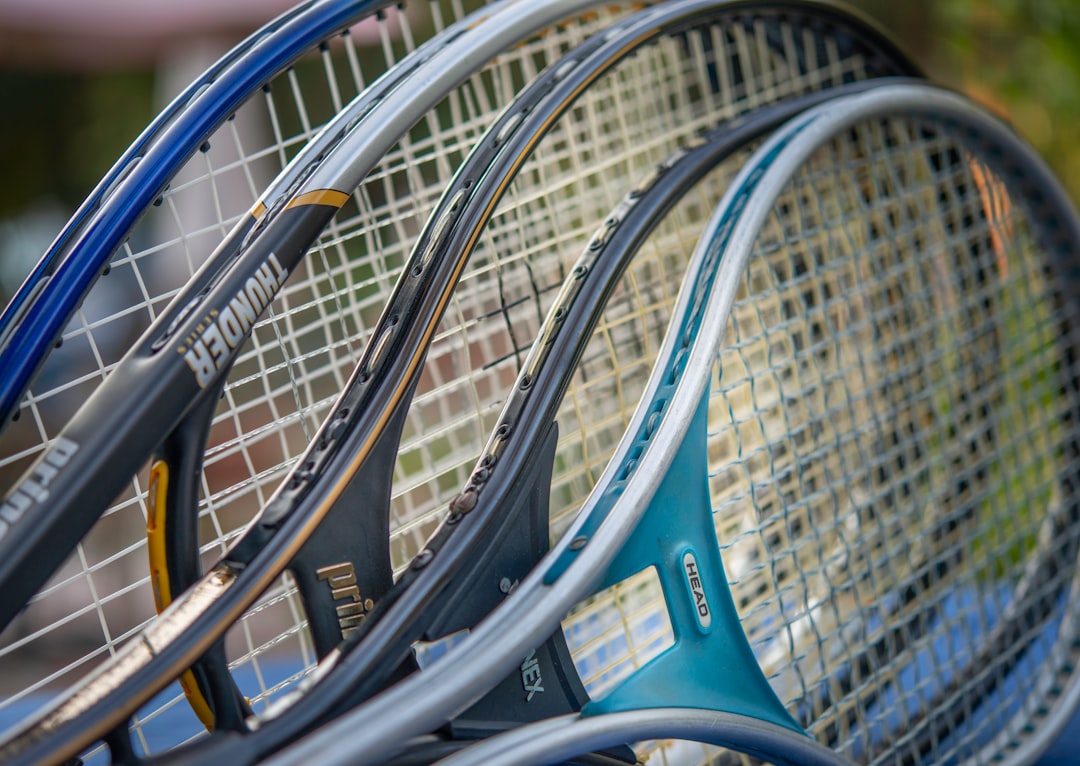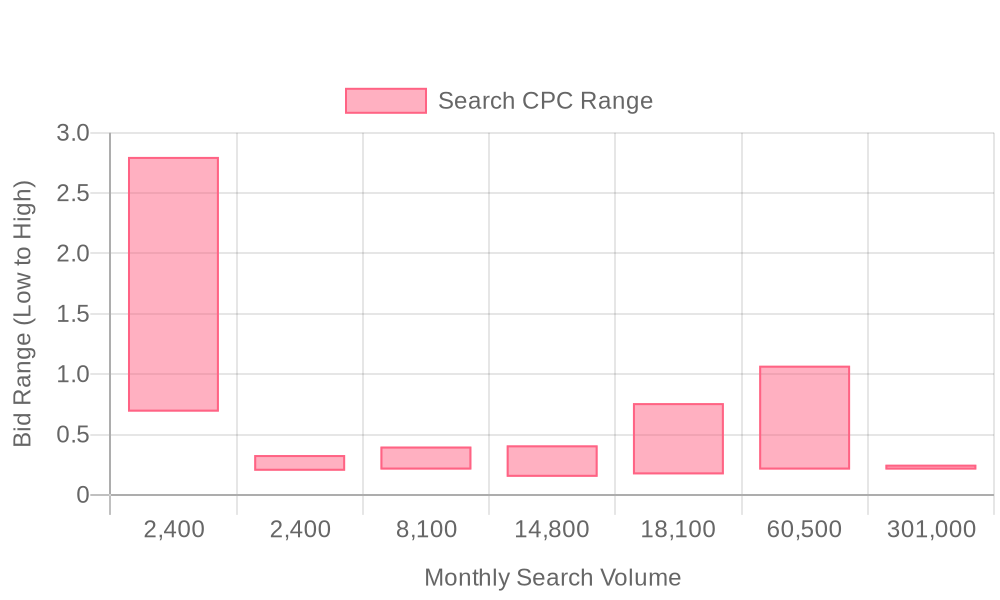
Supercharge your lead generation with a FREE Google Ads audit - no strings attached! See how you can generate more and higher quality leads
Get My Free Google Ads AuditFree consultation

No commitment
Supercharge your lead generation with a FREE LinkedIn Ads audit - no strings attached! See how you can generate more and higher quality leads
Get My Free Google Ads AuditFree consultation

No commitment
Supercharge your lead generation with a FREE Meta Ads audit - no strings attached! See how you can generate more and higher quality leads
Get My Free Google Ads AuditGet My Free LinkedIn Ads AuditGet My Free Meta Ads AuditFree consultation

No commitment
Supercharge your lead generation with a FREE Google Ads audit - no strings attached! See how you can generate more and higher quality leads
Get My Free Google Ads AuditFree consultation

No commitment
In today's dynamic marketplace, sporting goods retailers face unique challenges in capturing the attention of customers who are often overwhelmed with choices. Effective use of Google Ads can be a game-changer, leveraging precision targeting to intersect potential buyers at their exact moment of need. In competitive sectors, there is significant risk of missing high-value prospects because they aren't tracked in the CRM, leading to lost opportunities. For sporting goods businesses, this means harnessing the power of search to align online efforts with offline sales, targeting sports enthusiasts actively searching for equipment or apparel. Google Ads bridges the gap between digital discovery and physical purchase, offering a powerful way to enhance market presence and drive sales. This article will guide you through setting up a comprehensive Google Ads campaign tailored to the sporting goods industry.

A data-driven approach to Google Ads is essential for sporting goods retailers seeking sustained lead generation and revenue growth. Integrating campaign insights with broader marketing data ensures every dollar spent reaches high-value prospects rather than getting lost in fragmented tactics. To see how advanced tactics can maximize sales and visibility, explore this guide to Google Shopping for sporting goods.
Audiences in the sporting goods category span equipment buyers, apparel seekers, and sports enthusiasts, each with unique purchase intent signals. Effective keyword and audience targeting helps retailers capture demand across these segments while addressing the persistent challenge of anonymous web traffic that often leads to missed opportunities.
Landing page design and ad creatives must align tightly with buyer expectations to convert high-interest demos into actionable leads. When marketing teams connect creative messaging with real-time audience data, they maximize conversion rates rather than leaving engaged prospects unconverted due to irrelevant experiences.
Continuous performance optimization and cross-channel integration solidify the results of Google Ads for Sporting Goods Retail. By unifying campaign data and leveraging smart segmentation, marketers prevent wasted spend from disconnected efforts, instead reinforcing a cohesive sporting goods online marketing strategy. Dynamic audience syncing and enriched attribution further close the loop, keeping every campaign in sync with sales and CRM platforms. For more on how retargeting fits into this strategy, review the retargeting strategies guide.
Ready to turn insights into action? Get started for free with Sona.

Sporting goods retailers operate in a market defined by evolving trends, seasonal surges, and a vast spectrum of specialized consumer interests. Precision targeting through Google Ads means retailers can reach niche audiences at the moment of intent, ensuring that active buyers searching for equipment, apparel, or accessories see relevant ads rather than being lost in anonymous traffic. For a deeper dive into maximizing sales from these audiences, explore this guide to Google Shopping for sporting goods.
Capturing high-margin product demand is critical, especially when premium sports gear and specialized equipment represent significant sales potential. Google Ads enables brands to zero in on these high-value segments, minimizing missed opportunities that traditional email campaigns or organic efforts may overlook. By integrating enriched audience data into campaigns, marketers ensure that warm leads for top-tier products are always surfaced and acted upon.
Meeting immediate demand requires agility, especially during peak seasons or around major sporting events when consumer interest spikes. Google Ads empowers retailers to adjust messaging and budget allocation in real time, maximizing conversions from in-market shoppers. When paired with real-time visitor intent data and dynamic audience updates, campaigns become even more responsive to shifting behaviors and local trends.
Expanding into emerging markets or new geographic regions is essential for growth. With Google Ads, sporting goods retailers can target specific locations and demographics with pinpoint accuracy, opening doors to fresh audiences beyond the reach of traditional channels. Unified data insights further enable teams to connect digital ad engagement with offline conversions, offering a holistic perspective on campaign effectiveness and guiding smarter investment decisions. Ready to see the impact firsthand? Get started for free with Sona.


Sporting goods retailers face rapid shifts in buyer behavior and demand, requiring precise strategies to capture untapped revenue. Growth lies in leveraging high-intent data, tapping into overlooked market segments, and aligning your digital approach with evolving customer journeys.
Ready to unlock new revenue channels and optimize your campaigns? Get started for free with Sona.
Effective audience segmentation is essential for sporting goods retailers to maximize the impact of their digital advertising and deliver highly relevant experiences at scale. By customizing segments based on real buyer behaviors and intent, marketing teams avoid wasted spend and surface their message to the most engaged customers in the market. This approach creates a foundation for data-driven growth and elevates the performance of digital advertising campaigns.
Ready to see how audience segmentation can supercharge your results? Get started for free with Sona.

| Industry | Keyword | Monthly Search Volume | Competition Level | Low Bid | High Bid |
| Sporting Goods Retail | cabela's sporting goods | 2400 | HIGH | 0.69 | 2.8 |
| Sporting Goods Retail | hibbett sports online sale | 2400 | HIGH | 0.2 | 0.33 |
| Sporting Goods Retail | hibbett sports online | 8100 | HIGH | 0.21 | 0.4 |
| Sporting Goods Retail | academy sporting goods | 14800 | HIGH | 0.15 | 0.41 |
| Sporting Goods Retail | scheels sporting goods | 18100 | LOW | 0.17 | 0.76 |
| Sporting Goods Retail | sporting good store | 60500 | MEDIUM | 0.21 | 1.07 |
| Sporting Goods Retail | dick's sporting goods near me | 301000 | LOW | 0.21 | 0.25 |
Effective keyword strategy in sporting goods retail begins with precision targeting across all product categories. Focusing on key segments such as equipment model names, trending athletic apparel, and seasonal gear ensures visibility where demand is highest, especially for limited-release lines or sport-specific gear. For a deeper dive into advanced tactics for campaign planning and optimization, see this guide to maximizing sales and visibility for sporting goods retailers.
Strategic selection of keywords must be driven by search volume, intent, and competition data. For example, terms like “youth soccer cleats 2024,” “carbon fiber tennis racquet,” or “winter running jackets sale” consistently capture buyers with strong purchase intent. Prioritizing these terms minimizes wasted spend on low-performing queries and aligns budgets with proven revenue drivers. Explore more actionable playbooks for marketers and sales teams to further refine your keyword targeting.
A unified data platform enables revenue teams to move beyond anonymous search traffic by mapping which companies and buyer groups are engaging with targeted terms. As leads progress through the funnel, keyword and audience lists update automatically, allowing marketing teams to shift spend toward in-market accounts. This agile approach to Google Ads optimization ensures every dollar supports tangible business growth in sporting goods online marketing.
A modern approach to Google Ads for Sporting Goods Retail demands more than basic campaign setup. Retailers seeking measurable growth require precise targeting, ongoing data refinement, and unified insights to consistently outperform competitors. Effective execution transforms ad spend into lasting customer relationships and repeatable revenue. For a comprehensive overview of campaign planning and advertising optimization in this sector, see this guide to Google Shopping for sporting goods.
Revenue teams in sporting goods retail must harness every available signal to drive smarter marketing decisions. By connecting ad performance, buyer intent, and multi-channel engagement, marketers can reduce wasted spend, personalize customer journeys, and maximize campaign ROI. Using Sona Identification enables teams to reveal which companies and people are visiting their website—even if they don't fill out a form—allowing for more precise targeting and improved pipeline quality.
Ready to transform your marketing results? Get started for free with Sona.

Expanding your sporting goods retail presence requires a sharp, data-driven approach that aligns marketing with real customer journeys. High-growth retailers achieve more by weaving digital signals, real-time trends, and audience insights into every campaign touchpoint.
Ready to take action? Get started for free with Sona.
As you navigate the dynamic world of Google Ads for sporting goods retail, it's crucial to leverage effective strategies that elevate your brand and boost sales. Throughout this exploration, we've delved into the core challenges retailers face, such as optimizing ad performance and crafting compelling ads that resonate with your target audience.
We've discussed key strategies, including the importance of keyword research, audience segmentation, and crafting engaging ad creatives. Additionally, we've highlighted best practices for improving your ad performance and maximizing return on investment. These insights are designed to empower you, turning potential obstacles into stepping stones for success in the digital marketing landscape.
Imagine transforming your online presence with highly targeted ads that not only capture attention but also drive meaningful engagement and sales. By implementing these strategies, you're well on your way to enhancing your digital footprint and achieving your business goals in the competitive sporting goods market.
Now is the time to take action. To truly experience the transformative capabilities and actionable insights we offer, start for free and explore our platform. Embark on a journey to unify your go-to-market data and propel your business forward with confidence.
Effective keywords include specific product names, trending athletic apparel, and seasonal gear terms like 'youth soccer cleats 2024' or 'winter running jackets sale,' which capture buyers with strong purchase intent.
To set up Google Shopping campaigns, focus on keyword strategy, audience targeting, and integrating campaign insights with broader marketing data to maximize sales and visibility.
Effective strategies include precision targeting, audience segmentation, real-time data insights, and unifying online efforts with offline sales to reach niche audiences at the moment of intent.
Track success through performance tracking, conversion tracking, and integrating CRM data to connect ad engagement with both online and offline sales for a complete view of ROI.
Common mistakes include not targeting high-intent keywords, failing to align ad and landing page messaging, and not integrating audience insights to refine targeting and reduce wasted spend.
Join results-focused teams combining Sona Platform automation with advanced Google Ads strategies to scale lead generation

Connect your existing CRM

Free Account Enrichment

No setup fees
No commitment required

Free consultation

Get a custom Google Ads roadmap for your business
Join results-focused teams combining Sona Platform automation with advanced Meta Ads strategies to scale lead generation

Connect your existing CRM

Free Account Enrichment

No setup fees
No commitment required

Free consultation

Get a custom Google Ads roadmap for your business
Join results-focused teams combining Sona Platform automation with advanced LinkedIn Ads strategies to scale lead generation

Connect your existing CRM

Free Account Enrichment

No setup fees
No commitment required

Free consultation

Get a custom Google Ads roadmap for your business
Join results-focused teams using Sona Platform automation to activate unified sales and marketing data, maximize ROI on marketing investments, and drive measurable growth

Connect your existing CRM

Free Account Enrichment

No setup fees
No commitment required

Free consultation

Get a custom Google Ads roadmap for your business
Over 500+ auto detailing businesses trust our platform to grow their revenue
Join results-focused teams using Sona Platform automation to activate unified sales and marketing data, maximize ROI on marketing investments, and drive measurable growth

Connect your existing CRM

Free Account Enrichment

No setup fees
No commitment required

Free consultation

Get a custom Google Ads roadmap for your business
Over 500+ auto detailing businesses trust our platform to grow their revenue
Join results-focused teams using Sona Platform automation to activate unified sales and marketing data, maximize ROI on marketing investments, and drive measurable growth

Connect your existing CRM

Free Account Enrichment

No setup fees
No commitment required

Free consultation

Get a custom Google Ads roadmap for your business
Over 500+ auto detailing businesses trust our platform to grow their revenue
Our team of experts can implement your Google Ads campaigns, then show you how Sona helps you manage exceptional campaign performance and sales.
Schedule your FREE 15-minute strategy sessionOur team of experts can implement your Meta Ads campaigns, then show you how Sona helps you manage exceptional campaign performance and sales.
Schedule your FREE 15-minute strategy sessionOur team of experts can implement your LinkedIn Ads campaigns, then show you how Sona helps you manage exceptional campaign performance and sales.
Schedule your FREE 15-minute strategy sessionOur team of experts can help improve your demand generation strategy, and can show you how advanced attribution and data activation can help you realize more opportunities and improve sales performance.
Schedule your FREE 30-minute strategy sessionOur team of experts can help improve your demand generation strategy, and can show you how advanced attribution and data activation can help you realize more opportunities and improve sales performance.
Schedule your FREE 30-minute strategy sessionOur team of experts can help improve your demand generation strategy, and can show you how advanced attribution and data activation can help you realize more opportunities and improve sales performance.
Schedule your FREE 30-minute strategy sessionOur team of experts can help improve your demand generation strategy, and can show you how advanced attribution and data activation can help you realize more opportunities and improve sales performance.
Schedule your FREE 30-minute strategy session





Launch campaigns that generate qualified leads in 30 days or less.
